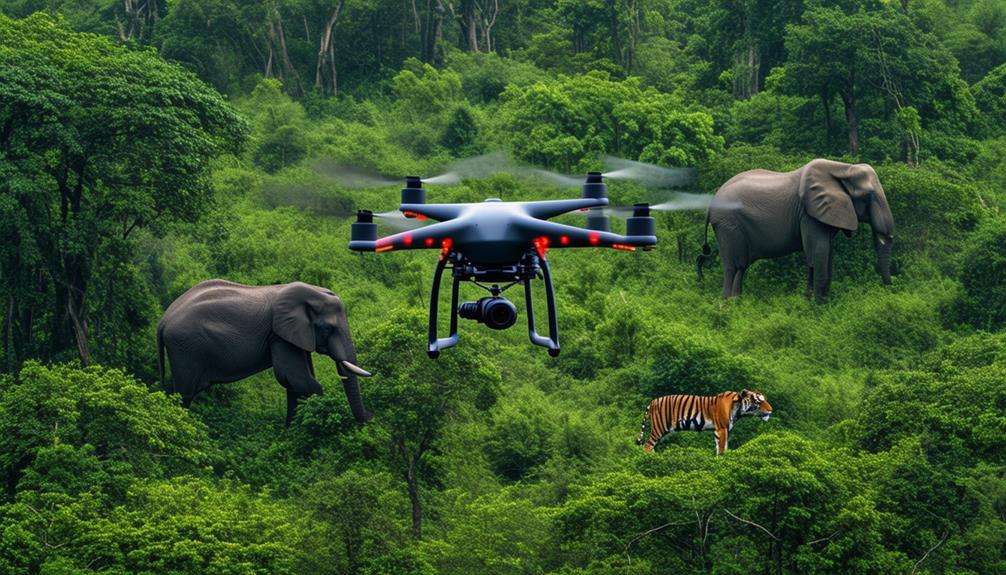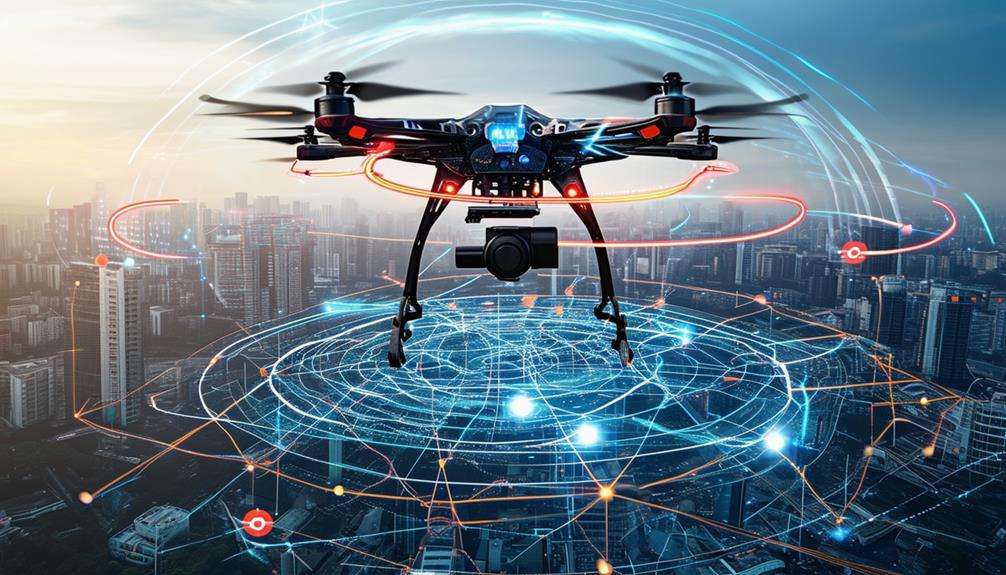UAV Traffic Management Systems: The Future of Air Traffic Control for Drones

Imagine a sky filled with drones, each navigating seamlessly without human intervention. UAV Traffic Management Systems (UTM) are essential for integrating drones safely into our airspace. These systems offer automated conflict resolution and real-time monitoring, making Beyond Visual Line of Sight (BVLOS) operations routine. How exactly do these systems function, and what role does the Federal Aviation Administration (FAA) play in shaping this evolving landscape? Understanding the answers could transform your perspective on air traffic control.
UTM Overview and Vision
UTM, or Unmanned Aircraft Traffic Management, is poised to transform drone operations within national airspace. It aims to seamlessly integrate unmanned aircraft systems (UAS) into the current air traffic management framework, accommodating the expected increase in drone activity. By facilitating Beyond Visual Line of Sight (BVLOS) operations, UTM unlocks new opportunities for delivery, surveillance, and various other applications without relying on traditional FAA air traffic services.
UTM utilizes a scalable airspace management approach, leveraging a distributed network for coordination and data exchange through APIs. This advanced framework ensures that real-time traffic management is both effective and efficient. Automated systems provide real-time airspace status updates, fostering cooperative interactions among UAS operators, service providers, and regulatory bodies.
Safety and efficiency are central to UTM's vision. By enabling real-time traffic management and promoting collaboration between industry stakeholders, UTM aims to create a secure and efficient environment for drone operations. As drone usage continues to rise, UTM will be crucial in maintaining orderly and safe airspace, ensuring all UAS operators can conduct their missions effectively and securely.
FAA Involvement and Processes
Navigating the complex landscape of drone operations requires robust oversight and stringent processes, and that's where the FAA steps in. The FAA plays a crucial role in UAS Traffic Management (UTM) by conducting comprehensive Safety Risk Management (SRM) evaluations for UTM services. These evaluations ensure that all drone operations adhere to essential safety standards and regulations.
The FAA Reauthorization Act of 2018 introduced the Near-Term Approval Process (NTAP), which expedites UTM service approvals. Rather than serving as a certification process, NTAP focuses on assessing the safety mitigation value of UTM services, enabling service providers to obtain necessary approvals more quickly.
To support drone traffic, especially for those operating under 400 feet AGL, the FAA reviews and approves UAS Service Suppliers (USS) and Supplemental Data Service Providers (SDSP). Participation in NTAP requires signing a Memorandum of Understanding (MOU) and undergoing continuous FAA oversight.
Why it matters to you:
- Enhanced safety: Rigorous SRM evaluations ensure safer skies for everyone.
- Faster approvals: NTAP accelerates the approval process, getting your drones operational sooner.
- Future-proofing: Continuous updates to regulations keep pace with emerging technologies.
The FAA's active involvement and adaptive processes are essential for maintaining a safe and efficient UTM ecosystem.
Key UTM Components
Understanding the FAA's role in UTM sets the stage for exploring the core components that make up an effective UAV Traffic Management system. Key components include airspace management tools, automated conflict resolution systems, effective communication protocols, and robust data-sharing mechanisms.
Airspace Management Tools
These tools are essential for real-time monitoring of drone activities, enhancing situational awareness for both drone operators and UAS Service Suppliers (USS). They ensure that all parties are aware of the current airspace status, thereby maintaining operational safety.
Automated Conflict Resolution Systems
These systems play a crucial role in minimizing collision risks and facilitating safe interactions between drones and existing air traffic management systems. They ensure seamless integration within the UTM framework, thereby enhancing overall airspace safety.
Effective Communication Protocols
Vital for facilitating safe and efficient data exchange, these protocols enable smooth communication between drone operators, USS, and regulatory bodies. They ensure that all relevant parties have access to accurate and timely information, which is essential for informed decision-making.
Data-Sharing Mechanisms
These mechanisms allow for real-time updates on airspace status, enabling proactive decision-making to avoid potential conflicts. Continuous information flow is crucial for maintaining safety and operational efficiency within the UTM ecosystem.
Benefits and Future of UTM
A well-implemented Unmanned Aircraft System Traffic Management (UTM) system offers substantial benefits by enhancing safety and reducing mid-air collision risks through real-time monitoring and automated conflict resolution. As drone operations become more complex, UTM ensures that unmanned aircraft can operate safely within increasingly crowded airspace.
Beyond safety, UTM unlocks economic growth by enabling new drone-based services across various industries. Imagine millions of daily drone operations enhancing productivity and creating jobs. Key improvements include:
- Operational efficiency: Structured frameworks ensure regulatory compliance and streamlined operations.
- Economic opportunities: New services and applications lead to job creation and innovation.
- Global collaboration: Consistent international standards promote shared advancements.
Continuous advancements in UTM technologies allow regulations to evolve alongside drone applications. This adaptability is crucial for balancing innovation with safety. Engaging stakeholders—such as drone operators, service providers, and regulatory bodies—is essential for addressing challenges and leveraging opportunities within the UTM framework.
Related Resources and Engagement

When exploring UAV Traffic Management (UTM) systems, numerous resources and engagement opportunities are available to keep you informed and involved. The UTM Fact Sheet is an essential starting point, offering a concise summary of key project objectives and an overview of UTM initiatives. This publicly accessible document enhances awareness among stakeholders about the evolving landscape of UAS Traffic Management.
NASA provides continuously updated educational resources, including technical documents and multimedia content, to keep you informed about UTM developments. For practical applications, the Low Altitude Authorization and Notification Capability (LAANC) system is invaluable. LAANC streamlines the authorization process for drone operators, facilitating safe drone operations within controlled airspace.
Engagement opportunities abound through consortium websites, which offer pathways for stakeholders to participate in UTM-related activities. These platforms foster collaboration among industry, government, and academic entities, crucial for developing a federated network and establishing consensus standards. Understanding the Concept of Operations (CONOPS) and forming partnerships with UAS Service Suppliers will prepare you for integrating into the future airspace, ensuring efficient and safe drone traffic management.




